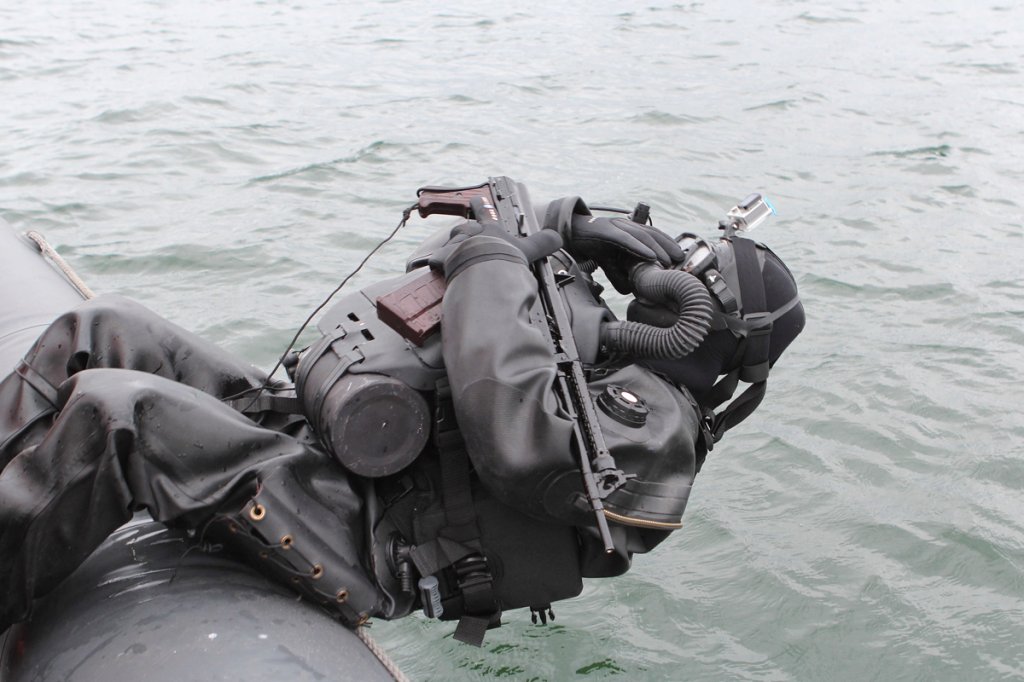

Some might say the USSR was watching too many James Bond movies for creating a special underwater assault rifle, but judging by how many countries still use the Avtomat Podvodny Spetsialnyy (or APS) weapon, they might have just been filling a need we haven’t considered in the West.
World War II began the use of special commando units of frogmen who infiltrated sensitive coastal areas and conducted all manner of special missions. Reconnaissance of enemy positions, mapping potential landing zones and even outright destruction or sabotage wreaked havoc on the Axis during World War II.
And the Soviet Union watched it all, as British and American commandos swam in, mostly unopposed, to do whatever they had to do. Short of men on boats and vigilant guards, there was little that could be done about it. Today, everyone seems to have frogmen while ports and ships are defended by ultrasonic detection, specially-trained maritime defense boats, and even dolphins.

During the Cold War, the USSR decided it would have its own frogmen defend against frogmen, but Soviet divers were going to be able to pack as much heat as possible. Knives and the AK-47 were effective, but the rifle could only really be used with any effectiveness on the surface of the water. In 1971, the Soviets developed a contained underwater pistol, but testing revealed it was only effective at close ranges.
The Soviet Union wanted its frogmen to be able to unload on a potential threat with overwhelming firepower from a distance, so they took what they learned from making the SPP-1 underwater pistol and created an automatic rifle, complete with special ammo, to give divers that kind of firepower.
Design Engineer Vladimir Simonov from the Tula Arms Plant took on the task of building the world’s first-ever underwater automatic firearm. The first problem was the ammunition. Bullets meant for the air are notoriously inaccurate underwater and have a much shorter range. Simonov designed a steel bolt 4.5 inches long, attached to a miniature rocket that could be fed into the barrel.
Next, he developed a special receiver that would allow water to move around easily as the weapon’s action moved. The action is moved with compressed gas, which allows it to also work outside of the water. Finally, the weapon’s barrel isn’t rifled. Instead, the bullets move and are kept on target using the hydrodynamic effects of the water around it.

The resulting firearm was more powerful and a speargun, and could penetrate most of the protection used by underwater frogmen, their helmets and breathing sets, and even the exteriors of many underwater vehicles. Its drawbacks included its weight, which was heavier than that of a normal rifle, and when fired, the gas it used created a lot of bubbles, which obscured the vision of its user. Future modifications decreased the volume of bubbles created by the weapon, however.
For Russian special forces, it was the underwater weapon of choice, but many chose to continue using the SPP-1 underwater anyway. The APS was not an effective weapon outside the water, and Russian special forces needed to operate in both areas. Despite that preference, the APS is still used by Russia, Ukraine and other former Soviet republics, and India to this day — almost 50 years after its development.
